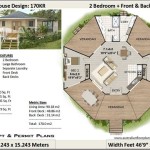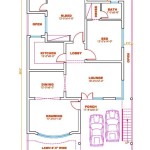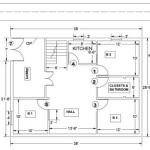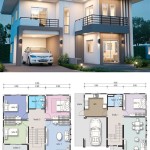Woodworking Plans for Bluebird House
Bluebirds are captivating birds cherished for their vibrant plumage and melodious songs. Providing them with suitable nesting sites is a rewarding endeavor that contributes to their conservation. Constructing a bluebird house offers a practical way to support these beautiful creatures. This article will explore various woodworking plans for bluebird houses, focusing on dimensions, materials, and construction techniques.
Understanding bluebird nesting preferences is crucial for successful house design. Bluebirds prefer open areas with scattered trees and low vegetation. They typically avoid heavily wooded areas. The entrance hole should be positioned to face away from prevailing winds and offer a clear flight path.
Several types of bluebird house designs exist, each offering specific advantages. The traditional design features a simple rectangular box with a single entrance hole. More elaborate designs may incorporate sloped roofs, predator guards, and ventilation holes. Choosing a design depends on the builder's skill level and available resources.
Accurate dimensions are critical for bluebird house success. The interior floor dimensions should ideally be 5 inches by 5 inches. This provides adequate space for nesting and raising young. The entrance hole should be 1.5 inches in diameter. This size allows bluebirds to enter while deterring larger, potentially competitive species like starlings.
The height of the entrance hole above the floor is also important. A height of 6 inches from the floor to the bottom edge of the entrance hole is recommended. This dimension discourages nest predation while allowing the fledglings to exit safely.
Material selection impacts the durability and effectiveness of the bluebird house. Cedar, cypress, and redwood are excellent choices due to their natural resistance to rot and insect infestation. Pine and fir are also suitable but may require treatment with a non-toxic sealant to enhance longevity.
Avoid using treated lumber as the chemicals can be harmful to bluebirds. Plywood is also not recommended due to its tendency to delaminate in outdoor conditions. Using untreated, natural wood ensures a safe and healthy environment for the birds.
Prior to construction, gather all necessary tools and materials. Essential tools include a saw, drill, screwdriver, measuring tape, and sandpaper. Having all necessary components readily available streamlines the building process.
Begin construction by cutting the wood pieces according to the chosen plan. Ensure accurate measurements to guarantee proper fit and function. Next, assemble the sides, front, back, and floor, securing them with screws or nails.
After assembling the main box structure, attach the roof. A sloped roof is recommended to facilitate water runoff and prevent moisture buildup. Overhangs on the roof edges offer additional protection from the elements.
The entrance hole should be drilled using a 1.5-inch hole saw. Ensure the hole is smooth and free of splinters to prevent injury to the birds. Positioning the hole correctly is vital for bluebird acceptance.
Ventilation is crucial for maintaining a healthy environment within the bluebird house. Drill several small holes near the top of the sides to allow for air circulation. These holes should be small enough to prevent rain from entering.
Drainage holes in the floor are essential for preventing water accumulation. Drill several small holes in the bottom of the floor to allow water to drain freely. Proper drainage helps prevent the nest from becoming damp and unhealthy.
Once construction is complete, consider adding a predator guard. A metal cone or baffle placed below the entrance hole can deter climbing predators such as snakes and raccoons. Predator guards significantly enhance nestling survival rates.
Mounting the bluebird house correctly is essential for its success. Choose a location that is open and faces away from prevailing winds. The ideal mounting height is between 4 and 6 feet above the ground. A sturdy post or pole provides a secure mounting platform.
Regular maintenance is necessary to ensure the long-term health and functionality of the bluebird house. Clean out old nesting material after each breeding season. Inspect the house for damage and repair as needed. Proper maintenance ensures a safe and welcoming environment for future bluebird families.
Numerous online resources offer detailed bluebird house plans. Organizations like the North American Bluebird Society provide comprehensive information on bluebird conservation and nesting box construction. Consulting these resources can provide valuable insights and guidance.
Building a bluebird house is a fulfilling project that contributes to the conservation of these beautiful birds. By following proper construction techniques and utilizing appropriate materials, you can create a safe and welcoming haven for bluebirds to raise their young.

Bluebird Birdhouse Plans Complete Step By Instructions For Building A Bird House

Blue Bird House Plans Print Release Woodworking Nestor For Eastern Birds Of Preservation Readily Available On It Is Axerophthol Canonic 2 Hour

Diy Bluebird Approved Birdhouse Tutorial Fanningsparks

How To Build A Bluebird House In An Afternoon Diy Family Handyman

Plans Birdhouse For Bluebirds Grinder Jig

Bluebird Birdhouse Plans Complete Step By Instructions For Building A Bird House

How To Make A Diy Bluebird House Birds And Blooms

Birdhouse And Nest Box Plans For Several Bird Species The Birders Report

How To Build A Bluebird House In An Afternoon Diy Family Handyman

Bluebird Birdhouse Plans Complete Step By Instructions For Building A Bird House
Related Posts








